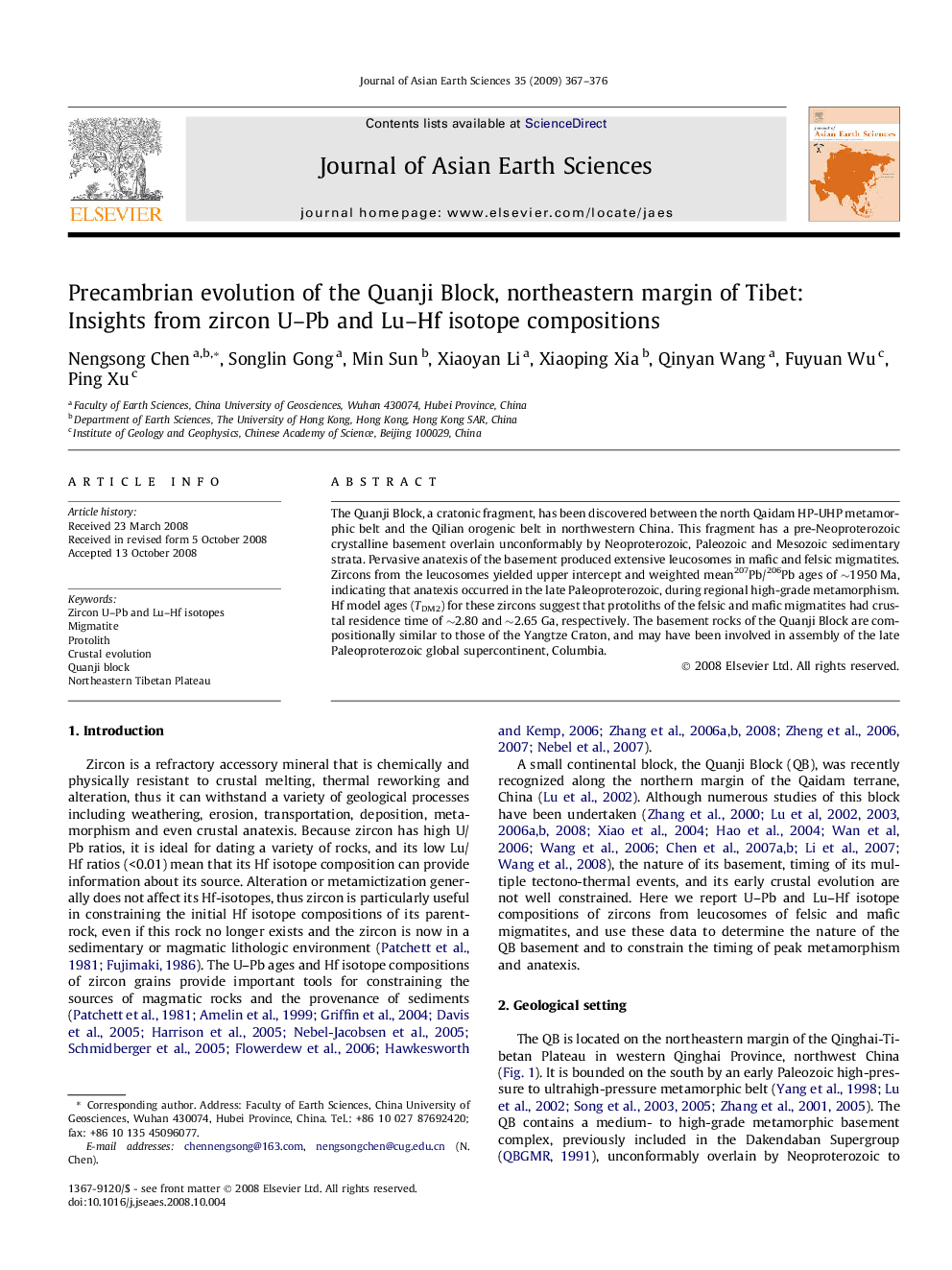| Article ID | Journal | Published Year | Pages | File Type |
|---|---|---|---|---|
| 4732548 | Journal of Asian Earth Sciences | 2009 | 10 Pages |
Abstract
The Quanji Block, a cratonic fragment, has been discovered between the north Qaidam HP-UHP metamorphic belt and the Qilian orogenic belt in northwestern China. This fragment has a pre-Neoproterozoic crystalline basement overlain unconformably by Neoproterozoic, Paleozoic and Mesozoic sedimentary strata. Pervasive anatexis of the basement produced extensive leucosomes in mafic and felsic migmatites. Zircons from the leucosomes yielded upper intercept and weighted mean207Pb/206Pb ages of â¼1950Â Ma, indicating that anatexis occurred in the late Paleoproterozoic, during regional high-grade metamorphism. Hf model ages (TDM2) for these zircons suggest that protoliths of the felsic and mafic migmatites had crustal residence time of â¼2.80 and â¼2.65 Ga, respectively. The basement rocks of the Quanji Block are compositionally similar to those of the Yangtze Craton, and may have been involved in assembly of the late Paleoproterozoic global supercontinent, Columbia.
Related Topics
Physical Sciences and Engineering
Earth and Planetary Sciences
Geology
Authors
Nengsong Chen, Songlin Gong, Min Sun, Xiaoyan Li, Xiaoping Xia, Qinyan Wang, Fuyuan Wu, Ping Xu,
